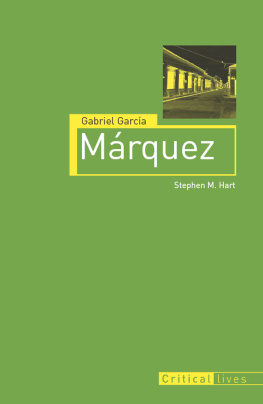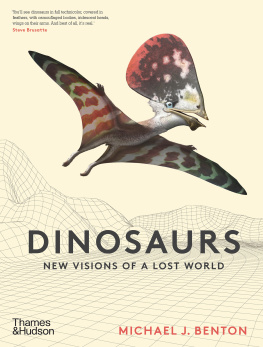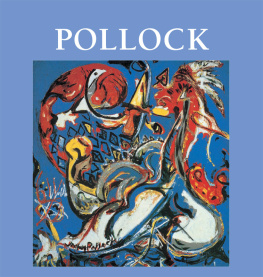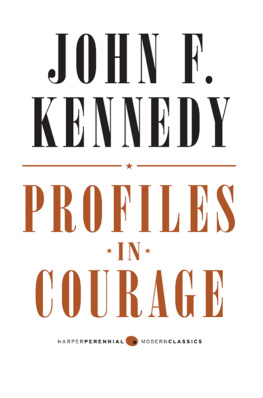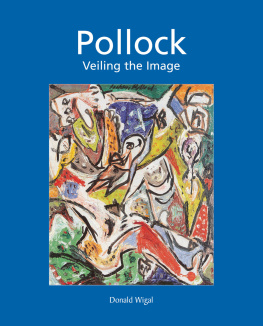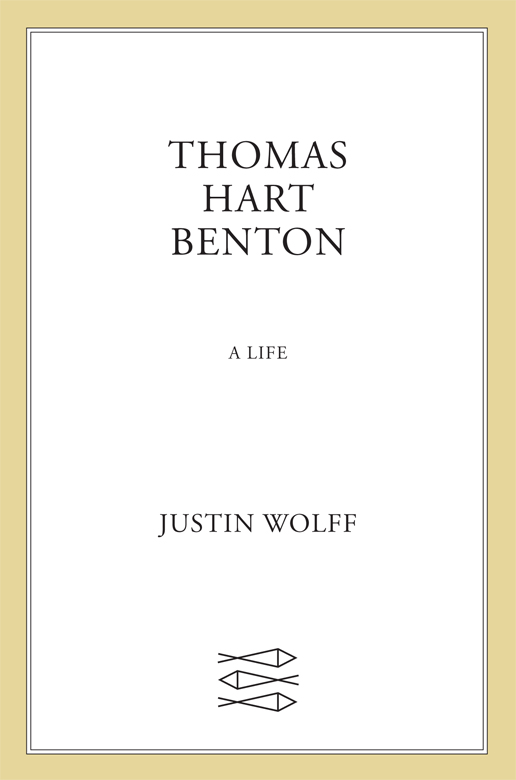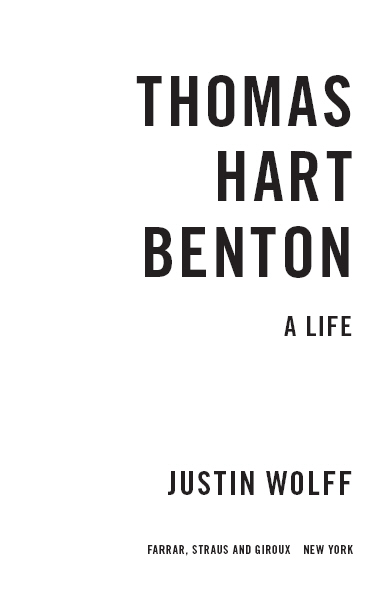
The stuff of this America which I know directly and immediately is to me more important than all the art of the past.
Thomas Hart Benton
CONTENTS
ACKNOWLEDGMENTS
I am immensely grateful to those generous institutions and organizations that awarded me funding while I was working on this book. I am especially thankful for a yearlong research fellowship from the National Endowment for the Humanities. I am grateful as well for funding from the Society for the Preservation of American Modernists and, at the University of Maine, Orono, the Faculty Research Funds Program, the College of Liberal Arts and Sciences, and the Department of Art.
I owe my biggest debt to the community of scholars whose analyses of Thomas Hart Benton preceded mine. For sharing research discoveries, offering criticisms, and responding to my phone calls and e-mails, I am particularly beholden to Henry Adams, Margi Conrads, Erika Doss, Randall Griffey, and Leo Mazowall of whose insights are reflected throughout my book. In addition, I am grateful for the wisdom of Matthew Baigell, Austen Barron Bailly, Marianne Berardi, Emily Braun, Elizabeth Broun, Ken Burns, Polly Burroughs, Creekmore Fath, Vivien Fryd, Karal Ann Marling, Bob Priddy, and Michael Szalay. For their participation on a Benton panel I chaired at the College Art Associations annual conference in 2006, I thank John X. Christ, Roberta Smith Favis, Randall C. Griffin, Leo Mazow, and Kristina Wilson. I am also grateful for the helpful conversations I had with Debra Bricker Balkan, Betsy Kennedy, Lauren Lessing, and Jake Wien. I want to express my appreciation as well to Jessie Benton, who kindly and patiently answered my queries about her father.
As any scholar will tell you, research libraries and archive collections perform an enormous service in making their holdings available to researchers. For their research assistance, I am grateful to the staff of the Department of American Art at the Nelson-Atkins Museum of Art in Kansas City; the staff of the Spencer Art Reference Library at the Nelson-Atkins, especially Jeffrey Weidman and Holly Wright; the offices of the Archives of American Art in Washington, D.C., and New York City; and Jan Leonard of the Thomas Hart and Rita Piacenza Benton Testamentary Trusts at UMB Bank, Kansas City.
My editors at Farrar, Straus and Giroux, Courtney Hodell and Mark Krotov, have worked tirelessly on behalf of this book, and I am enormously appreciative of their diligence and patience. I am also thankful for the careful work of my copy editor, Ingrid Sterner, and my production editor, Susan Goldfarb. I would like to acknowledge as well Josh Kendall, who got this project started. In addition, I am grateful to my agent, Sarah Chalfant, and her assistants at the Wylie Agency.
Finally, I want to thank my supportive colleagues in the Department of Art at the University of Maine. Their good cheer and encouragement have been remarkable. And to my family, Megan, Ruby, and Oscarwow thank you.
PROLOGUE: SKETCHES FROM LIFE
In the summer of 1920, when he was thirty-one, Thomas Hart Benton and his future wife, Rita Piacenza, visited Marthas Vineyard for the first time. They both lived in Manhattan, where Benton had been painting since 1912 and twenty-year-old Rita was taking art classes and designing sewing patterns. Looking to escape the heat of the city, they rented a farmhouse and a barn with some friends in the town of Chilmark. Tom and Rita loved the area so much that six years later, they bought land near Menemsha Pond, where they spent almost every summer until their deaths in 1975. Menemsha means still water in the language of the Wampanoag Indians, and on calm days the pond is the picture of serenity: cranes feed on sand eels in its ring of marsh grass, and ospreys swoop in and out of high-perched nests. Benton often swam in the Atlantic while Rita gathered cranberries, beach plums, and wild grapes. The couples two childrenThomas, known as T.P., and Jessieran wild across Chilmarks hills and beaches. The island, Benton avowed, occasioned one of the greatest changes in my life: it cleared his view of the world and inspired him. It was, he added, the only place I ever found peace.
Benton also claimed that his painting matured once he discovered the Vineyards windblown landscape and Yankee villagers. During their third summer on the island, in 1922, Benton painted Self-Portrait with Rita , which shows the couple on a beach near the Gay Head cliffs, on the southwestern tip of the Vineyard. At the time, he was abandoning abstract painting for a realist style influenced by Renaissance, mannerist, and baroque artists. In fact, Self-Portrait with Rita was a debut of sorts, a calculated presentation of his newfound aesthetic, which he fashioned from the influence of the muscular figures of Michelangelo and Peter Paul Rubens and the attenuated forms of Jacopo Pontormo and Parmigianino. Benton continued working in this style, with a few modifications, for the rest of his long career; his easel paintings and murals depict similarly robust figures situated in stylized landscapes, cityscapes, or interiors.
The painting introduces what would become Bentons trademark dynamism; it is distinguished by undulating forms, as in the globular clouds and complementary convexities and concavitieswhat Benton called bumps and hollowsevident in the deep contours of his chiseled chest. The push and pull of the forms continues across the entire composition, which is animated by contrasts between light and dark, between recessive and dominant space. Theres a stirring organic quality to their figures as well, as if Tom and Rita have absorbed into their bodies the vitality of nature itself. Benton represents himself as a modern Poseidon, modeled by and just risen from the ocean glimpsed to his right. Rita, who sits in front of him, recalls the Madonnas in mannerist paintings; her strong, elongated figure appears to have been cut by the same ocean forces that pound at the Gay Head cliffs seen behind them. Benton was sure hed found his style, and the painting was his proclamation to the art world that it had better pay attention.
But the painting introduced more than just a style. It also revealed a philosophy of art that Benton would work his whole life to promote. This theory had to do with notions about the experience of place that were emerging at the time in the pragmatist philosophy of John Dewey (who would become enormously influential to Benton), the writings of the historian Lewis Mumford, and art and literary criticism more generally. Benton was attracted to pragmatisma distinctly American philosophy that shows how knowledge relates to practical purposes and maintains that intellectual ideas are only valid if they have human utility. Pragmatist thinkers reject abstraction and absolutism in favor of concreteness and action; they are interested in how knowledge is an instrument for adapting to environments rather than for elaborating theories. Benton fashioned from these principles an idiosyncratic worldview that had a lot in common with phenomenology, another modern philosophy. Phenomenology elevates immediate experiences over reflective analysis of those experiences. Its a doctrine that is more interested in how we process what Martin Heidegger calls being-in-the-world at the moment that were actually in it rather than after the fact. The concept of experience was crucial to Bentons attitudes about art, and he used the term often to explain his belief that art ought to represent life as it is actually lived in a particular environment. Art, according to Benton, should be instrumental (a favorite term of Deweys) and work to clarify ordinary experiences rather than interrogate the mysteries of the world. Based on such philosophies, Benton concluded that art should be realistic, not abstract, and that it should serve practical rather than intellectual ends.


